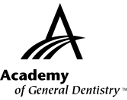|
Exercise No. 346
Subject Code: 250
Operative (Restorative) Dentistry
The 15 questions for this exercise are based on the article, "Fracture resistance of permanent anterior incisors using fiber-reinforced composite posts", on pages 37-42. This exercise was developed by Merlin Ohmer, DDS, FAGD, in association with the General Dentistry Self-Instruction committee.
|
Reading the article and successfully completing this exercise will enable you to better understand:
- the use of posts in restoring teeth;
- changes to teeth after non-surgical endodontic treatment; and
- the benefit of fiber-reinforced composite (FRC) posts.
|

